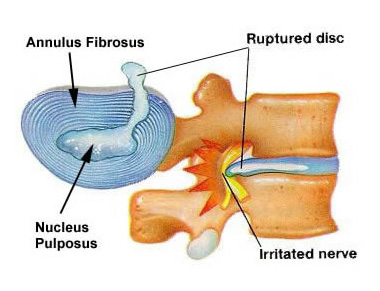Back Pain
Back pain results in more lost days from work than any other condition, barring the common cold. Approximately 4/5 people will suffer from some form of spinal pain during their lives. Statistics reveal 5 million people consult their doctor each year because of spinal pain. Structural integrity of spinal discs is maintained by movement. Changes in tension and variation in stress distribution is beneficial to prevent damage. Sedentary occupations and long periods hunched in one position result in structural stress and distoration of the jelly like disc. Bursts of activity may then produce damage and slipped discs. Back pain is less common in societies where manual labour is dominant. Sustained positions cause stress, stretch and distortion of ligaments, bones and muscles. The result can be aching or sharp back or neck pain. Nerve root irritation can cause leg or arm pain, pins and needles, numbness and muscle weakness. Manual treatment of individual vertebrae and muscle is often a valuable first approach. Severe and debilitating back symptoms may be prevented with periodic manual correction of spinal alignment. Only about 10 per cent of spinal pathology requires surgical intervention. Spine and discal health can be improved by regular, short periods of stretching and change of position throughout the day. This is valuable for those people in desk and computer based occupations.
Investigations
- X-Ray, MRI Scan, CT Scan, Blood Tests
Injections
- Pain Relief by Injection Epidural - into the dural space
- Facet joint - into the articulations of the vertebrae
Some Surgical Options
- Discetomy/Decompression
- XSTOP
- Disc Replacement
- Kyphoplasty
- Segmental Fusion

Diagram of a Disc prolapse - the annular fibres tear and allow the nucleus to protrude. This may compress the spinal canal or the nerves supplying the arms or legs. Chemical reaction from inflammation and the nucleal material antagonising the neural tissue results in pain, often severe.
There is evidence in the literature to suggest improved alignment of vertebral position, supplemented by adiquate muscle control contribute to improved anabolic (renewal of tissue) response with reduced catabolic (tissue distruction) affect. To maintain healthy tissue a balance is essential between anabolic and catabolic activity.
Consultations and Treatment from £95*
Appointments
07850 699534
*More complicated conditions may require
longer consultations and additional cost